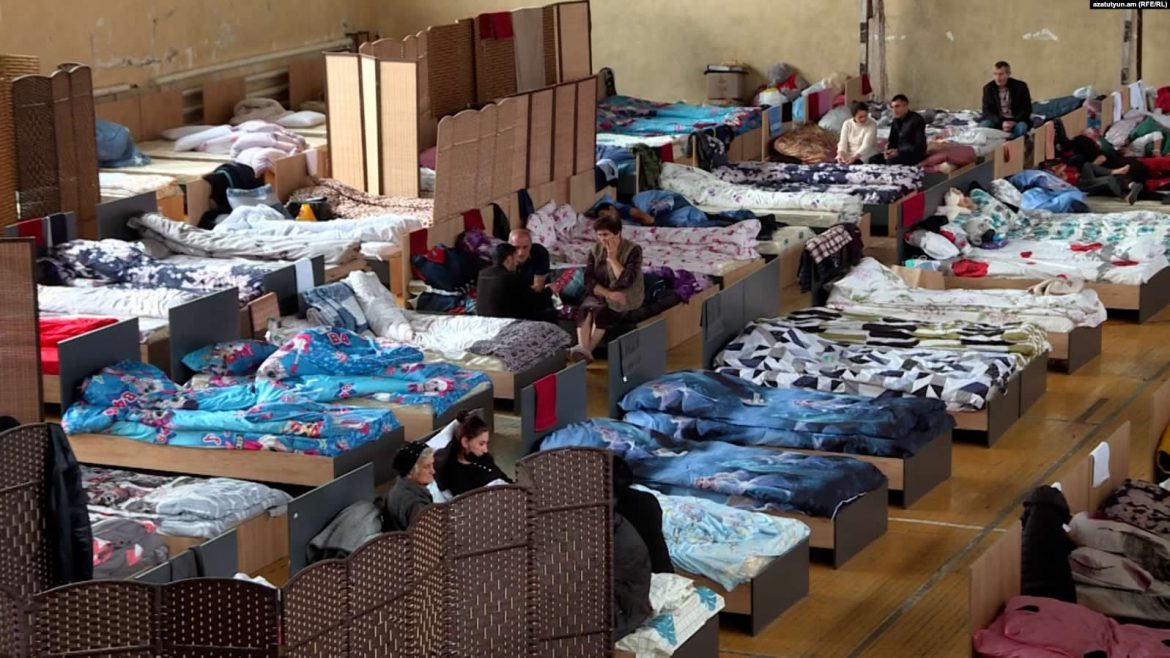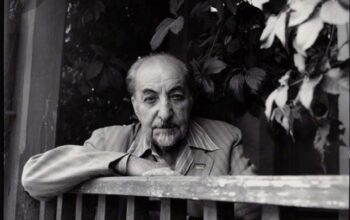Prime Minister Nikol Pashinyan touted his government’s handling of the massive influx of refugees from Artsakh (Nagorno-Karabakh) on Thursday even as at least 1,700 of them continued to live in kindergartens, schools and other buildings hastily converted into shelters.
Those refugees have so far been unable to find more adequate housing, which is increasingly expensive and in short supply in Armenia.
About 100 of them are sheltering in a kindergarten in Masis, a small town just south of Yerevan. Local authorities only managed to install additional toilets there before making the building available to the Karabakh Armenians who fled to Armenia after Azerbaijan’s September 19-20 military offensive. They also supply free food to the shelter on a daily basis.
Lena Avanesian, an elderly woman, shares a section of a kindergarten hall with her nephew and his wife. Only a curtain separates their makeshift home from several other families living in the large room. Avanesian’s biggest wish now is to replace it a wall and a door.
“We have to live here because we have nowhere to go,” said Zarine, another refugee whose family is looking for a village house in southern Ararat province but has not managed to find one so far.
RFE/RL’s Armenian Service heard on Thursday similar stories from other residents of the Masis shelter.
“We can’t find anything. There are simply no available homes,” said Arayik Hayrian, a young Karabakh man staying there with his brother’s and sister’s families.
A large group of other refugees in Masis are staying in a former casino building. They include Susanna Baghdasarian and nine other members of her family that had already fled its home in Karabakh’s southern Hadrut district when it was captured by Azerbaijani forces during the 2020 war. They lived in Stepanakert until the mass exodus of Karabakh’s population.
“I can’t complain about anything: they provided us with shelter and they give us food,” said Baghdasarian. She said her family has not yet started looking for a better place of residence because it is waiting for the Armenian government to make good on its pledge to give every refugee 50,000 drams ($125) per month for housing expenses.
Pashinyan touted this and other assistance during a weekly cabinet meeting in Yerevan. He said Western donors are impressed with the Armenian government’s response to the arrival of more than 100,000 refugees from Karabakh.
“They say they are surprised that 100,000 forcibly displaced people, essentially refugees, entered the country in three days and the government was able to take care of their short-term and mid-term needs,” he said. “They say that they do not remember such a precedent in the world.”
Pashinyan revealed at the same time that 2,500 Karabakh refugees have already left Armenia, presumably for Russia. He said he hopes that they will come back “some time later.”
The government claims to have housed more than half of the refugees in hotels, disused public buildings and empty village houses.
They include Meline Khachatrian, her husband and five children. The government gave them a free house in Hatsik, a village in Armenia’s northwestern Shirak province, while private benefactors donated furniture and household appliances. Four of the children are already enrolled in a local school.
Khachatrian’s husband is a Karabakh military officer who was swiftly recruited by the Armenian army late last month. The 32-year-old nurse said she was “terrified” when her family reached an Azerbaijani army checkpoint in the Lachin corridor during the evacuation to Armenia.
“We heard rumors that the Azerbaijanis have a list of more than 20,000 Karabakh military personnel [subject to arrest,]” she told RFE/RL’s Armenian Service.
Khachatrian said while she still hopes to return to Karabakh one day, living there “under enemy rule” is out of question. “That is why we decided to remain Armenians and move to Armenia,” added the woman.
Source: Azatutyun.am




